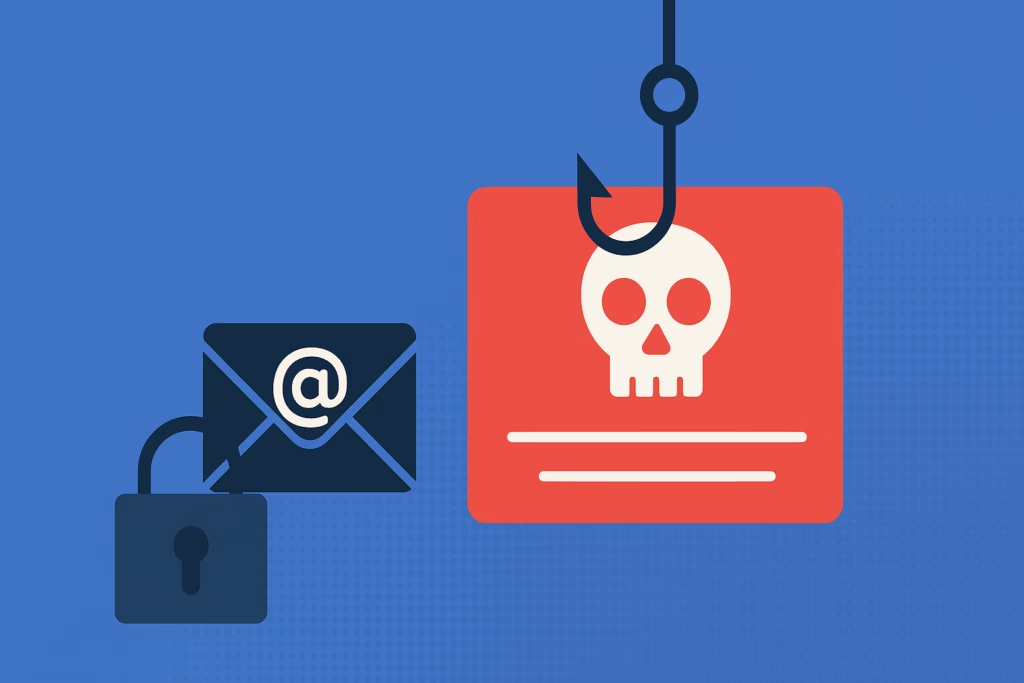
Government and IRS phishing scams represent one of the most sophisticated and damaging cyber threats facing Americans today. These fraudulent schemes exploit taxpayers’ natural anxiety about tax compliance and government authority, making them particularly effective at bypassing typical security awareness. With tax season generating billions in losses annually, understanding how these scams operate and implementing robust protection strategies has become essential for individuals and businesses alike.
The Federal Trade Commission reports that taxpayers lost over $5.9 billion to tax-related fraud in 2023, with government impersonation scams accounting for nearly 30% of all reported fraud cases. These statistics underscore a critical reality: cybercriminals have weaponized our civic obligations, turning routine government communications into potential security nightmares.
Understanding Government and IRS Phishing Attack Patterns
Government phishing attacks follow predictable patterns that exploit specific psychological triggers. Unlike generic phishing attempts, these campaigns leverage the inherent authority of government agencies to create urgency and bypass critical thinking. The IRS consistently warns taxpayers about these evolving threats, yet millions continue falling victim annually.
Common Government Agency Impersonations
Cybercriminals frequently impersonate multiple government agencies to maximize their attack surface:
- Internal Revenue Service (IRS) – Tax refunds, audits, and payment demands
- Social Security Administration – Benefit suspensions and account verification
- Department of Homeland Security – Immigration status and security clearances
- Federal Trade Commission – Identity theft notifications and account freezes
- Centers for Disease Control – Health-related compliance and emergency notifications
Seasonal Targeting Strategies
IRS phishing campaigns demonstrate remarkable seasonal sophistication. January through April sees a 400% increase in tax-related phishing attempts, according to FTC data. These campaigns exploit specific tax season anxieties:
- Early season refund notifications targeting eager taxpayers
- Mid-season audit threats creating compliance panic
- Late season payment demands exploiting deadline pressure
- Post-season identity theft alerts capitalizing on filing completion relief
Recognizing Advanced IRS Phishing Techniques
Modern IRS phishing attacks have evolved far beyond obvious grammatical errors and generic templates. Today’s government phishing campaigns employ sophisticated social engineering tactics that can fool even security-conscious individuals.
Email-Based Government Phishing Indicators
Legitimate government communications follow strict protocols that scammers struggle to replicate perfectly:
- Domain Authentication – Genuine IRS emails originate from official .gov domains with proper SPF/DKIM authentication
- Personalization Patterns – Real government emails reference specific case numbers, filing dates, or previously submitted information
- Action Requirements – Legitimate notices provide multiple contact methods and never demand immediate online responses
- Link Destinations – Official links direct exclusively to verified government websites with proper SSL certificates
Voice and SMS Government Impersonation
Phone-based government phishing has become increasingly sophisticated, with scammers using caller ID spoofing to display official government numbers. The FTC reports that 68% of government impersonation attempts now occur via phone calls, often followed by confirmatory text messages containing malicious links.
Authentic government agencies follow specific communication protocols:
- Initial contact occurs via postal mail for sensitive matters
- Phone calls reference previously mailed correspondence
- No immediate payment demands or threats of arrest
- Multiple appeal and resolution pathways offered
Real-World Government Phishing Case Studies
The 2023 Tax Refund Phishing Campaign
During spring 2023, cybercriminals launched a sophisticated IRS refund phishing campaign that compromised over 15,000 taxpayer accounts. The attack used legitimate-looking emails with subject lines like “IRS Refund Processing Delay – Action Required” and directed victims to convincing replica websites.
The campaign’s success stemmed from several factors:
- Perfect timing during peak refund processing periods
- Realistic government language and formatting
- Exploitation of genuine IRS processing delays
- Multi-stage verification requests building false legitimacy
COVID-19 Government Relief Fraud
The pandemic created unprecedented opportunities for government phishing attacks. Scammers impersonated multiple agencies offering stimulus payments, unemployment benefits, and health-related services. The Treasury Inspector General documented over $163 billion in fraudulent pandemic relief claims, with phishing playing a central role in identity theft enabling these losses.
Step-by-Step Government Phishing Verification Process
When receiving any government communication, follow this systematic verification approach:
Immediate Assessment Protocol
- Pause and Breathe – Government agencies rarely require immediate action, despite claims of urgency
- Verify Sender Information – Check email headers, phone numbers, and domain authenticity
- Cross-Reference Official Channels – Contact the agency directly using publicly listed contact information
- Document Everything – Save all communications for potential reporting to authorities
Technical Verification Steps
- Email Header Analysis – Examine full email headers for authentication failures or suspicious routing
- Link Inspection – Hover over links without clicking to reveal true destinations
- Attachment Scanning – Never open government attachments without independent verification
- Website Certificate Verification – Ensure any linked websites display valid SSL certificates from recognized authorities
Building Organizational Defense Against Government Phishing
Businesses face particular risks from government phishing attacks, as employees often feel compelled to respond quickly to apparent regulatory communications. Effective organizational defense requires both technological solutions and comprehensive security awareness training.
Technical Security Controls
Advanced email security platforms like PhishDef provide specialized government impersonation detection capabilities. These solutions analyze communication patterns, verify sender authenticity, and flag suspicious government-themed content before it reaches employee inboxes.
Essential technical controls include:
- Email Authentication Enforcement – Strict SPF, DKIM, and DMARC validation for government domains
- Link Analysis and Sandboxing – Automated inspection of government-themed URLs and attachments
- Behavioral Analytics – Detection of unusual communication patterns from government impersonators
- Real-time Threat Intelligence – Updates on emerging government phishing campaigns and indicators
Employee Training and Awareness
Regular security awareness training must specifically address government phishing scenarios. Employees need practical guidance on:
- Recognizing authentic government communication channels
- Understanding legitimate government contact procedures
- Implementing verification protocols for suspicious contacts
- Reporting potential government impersonation attempts
Legal and Regulatory Considerations
Government phishing attacks carry significant legal implications for both victims and organizations. The Department of Justice prosecutes government impersonation as a federal crime, with penalties including substantial fines and imprisonment.
Organizations must also consider compliance requirements when government phishing affects regulated data or processes. Industries like healthcare, finance, and defense face additional scrutiny when government impersonation leads to data breaches or regulatory violations.
Incident Response for Government Phishing Attacks
When government phishing attacks succeed, rapid response can minimize damage and support law enforcement investigations:
- Immediate Containment – Isolate affected systems and revoke potentially compromised credentials
- Evidence Preservation – Document all attack vectors, communications, and system impacts
- Stakeholder Notification – Inform relevant parties while coordinating with legal counsel
- Recovery and Remediation – Restore systems and implement additional security controls
- Law Enforcement Reporting – File reports with appropriate federal agencies and local authorities
Key Takeaways for Government Phishing Protection
Protecting against government and IRS phishing requires a multi-layered approach combining technological solutions, procedural controls, and security awareness. Remember these critical points:
- Government agencies follow strict communication protocols and rarely demand immediate action
- Verify all government communications through independent, official channels
- Implement advanced email security solutions capable of detecting government impersonation
- Maintain updated security awareness training addressing current government phishing techniques
- Develop and practice incident response procedures for government phishing scenarios
Government phishing attacks will continue evolving as cybercriminals refine their techniques and exploit new regulatory developments. Organizations that invest in comprehensive protection strategies today will be better positioned to defend against tomorrow’s threats.
Don’t let government impersonation scams compromise your organization’s security and reputation. PhishDef’s advanced threat detection platform provides specialized protection against government phishing attacks, combining real-time threat intelligence with sophisticated behavioral analysis. Contact our security experts today to learn how PhishDef can strengthen your defenses against evolving government impersonation threats and protect your organization from costly security breaches.


